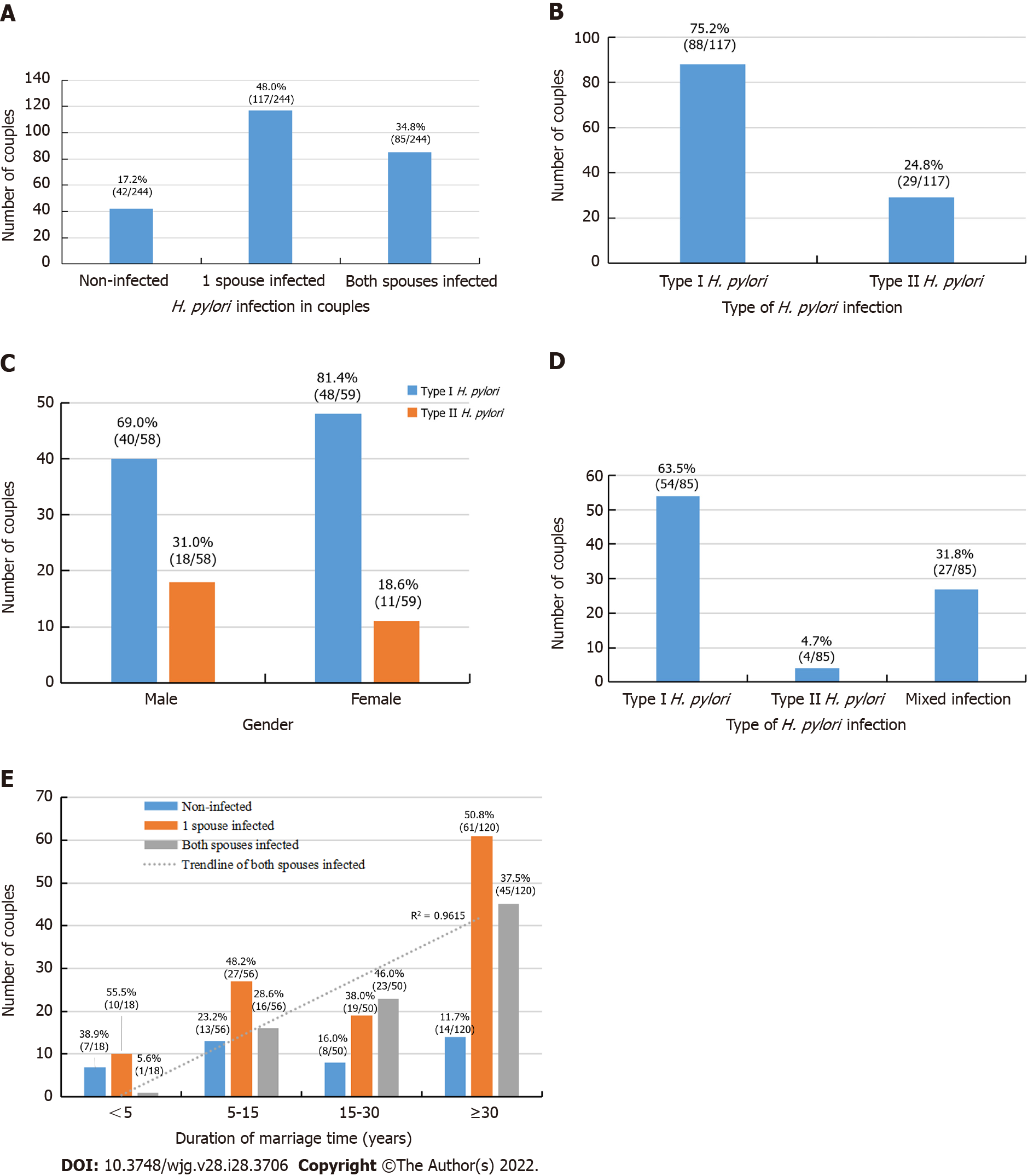Copyright
©The Author(s) 2022.
World J Gastroenterol. Jul 28, 2022; 28(28): 3706-3719
Published online Jul 28, 2022. doi: 10.3748/wjg.v28.i28.3706
Published online Jul 28, 2022. doi: 10.3748/wjg.v28.i28.3706
Figure 3 Helicobacter pylori infection status between 244 couples.
Values above each column are the case number and percentages of each group. A: Helicobacter pylori (H. pylori) infection status of 244 couples; B: Type I and II H. pylori genotype status of the 117 couples with 1 spouse infected; C: H. pylori genotype and sex of 117 couples with 1 spouse infected; D: H. pylori genotype status in 85 couples with both spouses infected; E: Relationship between infection and marriage duration in 244 couples. The dashed line across the figure is the trendline of both spouses infected, r = 0.98. Non-infected: All members in a couple were not infected; one spouse infected: Only 1 in a couple was infected; Type I H. pylori: H. pylori infection with type I strains; Type II H. pylori: H. pylori infection with type II strains; Mixed infection: H. pylori infection with type I and type II strains.
- Citation: Yu XC, Shao QQ, Ma J, Yu M, Zhang C, Lei L, Zhou Y, Chen WC, Zhang W, Fang XH, Zhu YZ, Wu G, Wang XM, Han SY, Sun PC, Ding SZ. Family-based Helicobacter pylori infection status and transmission pattern in central China, and its clinical implications for related disease prevention. World J Gastroenterol 2022; 28(28): 3706-3719
- URL: https://www.wjgnet.com/1007-9327/full/v28/i28/3706.htm
- DOI: https://dx.doi.org/10.3748/wjg.v28.i28.3706









